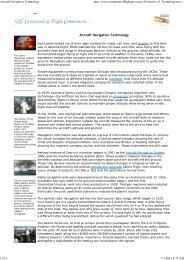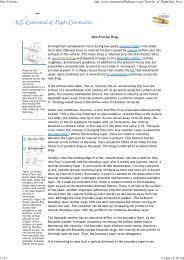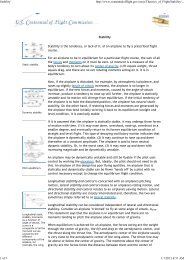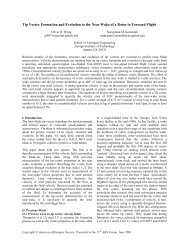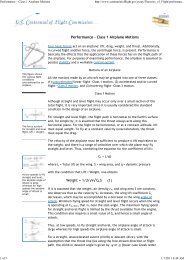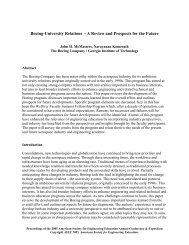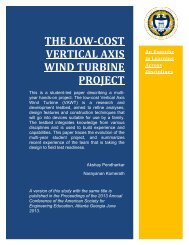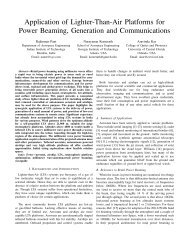Unsteady Aerodynamics of Rotorcraft in Ground Effect - Aerospace ...
Unsteady Aerodynamics of Rotorcraft in Ground Effect - Aerospace ...
Unsteady Aerodynamics of Rotorcraft in Ground Effect - Aerospace ...
You also want an ePaper? Increase the reach of your titles
YUMPU automatically turns print PDFs into web optimized ePapers that Google loves.
a) Due to w<strong>in</strong>d direction and advance ratio change, so that the fuselage/ tail rotor <strong>in</strong>teracts with different parts<br />
<strong>of</strong> the rotor wake. However, the rotor wake for a given flight condition is perfectly periodic. This situation<br />
can be modeled analytically through quasi-steady methods.<br />
b) Even thought the flight condition rema<strong>in</strong>s identical, <strong>in</strong>teractions between vortices, the ground and the<br />
vehicle surfaces, generate transient spikes <strong>in</strong> the forces and moments, with large <strong>in</strong>tervals possible between<br />
such occurrences. This situation is fundamentally unsteady, and requires long-period unsteady simulation<br />
methods with high accuracy.<br />
In real flight tests, these situations may be <strong>in</strong>dist<strong>in</strong>guishable, and may both occur simultaneously. In w<strong>in</strong>d tunnel<br />
tests, the latter situation corresponds to what we had tested so far. The former is the primary subject <strong>of</strong> the tests<br />
conducted, and the data presented <strong>in</strong> this paper.<br />
II. Background<br />
The <strong>in</strong>teraction <strong>of</strong> a rotorcraft wake with the ground dur<strong>in</strong>g low speed flight close to the ground <strong>in</strong>volves two<br />
dist<strong>in</strong>ct flow regimes:<br />
1. Recirculation <strong>of</strong> the wake ahead <strong>of</strong> the rotor at very low advance ratios, caus<strong>in</strong>g additional <strong>in</strong>flow through<br />
the forward part <strong>of</strong> the rotor. 1 (Recirculation Regime)<br />
2. Formation <strong>of</strong> a horseshoe ground vortex under the rotor at higher advance ratios with its associated<br />
<strong>in</strong>teractions. 1 (<strong>Ground</strong> Vortex Regime)<br />
Studies have found irregular changes <strong>in</strong> hub moment for a helicopter fly<strong>in</strong>g close to the ground 2 . Reference 1<br />
noted that the flow fluctuates at a low frequency <strong>in</strong> the recirculation regime. The authors <strong>in</strong> Reference 2 found that<br />
<strong>in</strong> the recirculation flow regime, there is very little lateral flow and moderate level <strong>of</strong> unstead<strong>in</strong>ess <strong>in</strong> the flow field.<br />
The unsteady phenomena have been attributed to the periodic <strong>in</strong>terference fluctuation between downwash and<br />
upwash <strong>in</strong> the recirculation regime 3 .<br />
When rotors are operat<strong>in</strong>g near the ground at low advanced ratios, the forward part <strong>of</strong> rotor wake, after<br />
imp<strong>in</strong>g<strong>in</strong>g on the ground plane, flows forward and then rolls up, form<strong>in</strong>g a recirculation zone around the rotors<br />
(Fig.1). For a s<strong>in</strong>gle rotor, the ground vortex center <strong>in</strong> the longitud<strong>in</strong>al symmetric plane is a little upstream <strong>of</strong> rotor<br />
lead<strong>in</strong>g edge 4 .<br />
Above a critical advance ratio, which depends upon collective pitch and height-to-diameter ratio, a well-def<strong>in</strong>ed<br />
concentrated horseshoe vortex is formed under the rotor, and significant lateral flow is present (Fig.2). The flow<br />
field becomes quite steady. The vortex becomes smaller, and eventually vanished as the advance ratio is <strong>in</strong>creased.<br />
The ground vortex also alters the helicopter yaw control effectiveness <strong>in</strong> sideway and rearward flights near the<br />
ground.<br />
The ground vortex itself is quite unsteady, both <strong>in</strong> size and shape, and also <strong>in</strong> location 5 . The ground vortex has a<br />
large-scale low-frequency pulsat<strong>in</strong>g behavior, which is referred to as puff<strong>in</strong>g <strong>of</strong> the ground vortex. The sequence <strong>of</strong><br />
this puff<strong>in</strong>g behavior is as follows. First the ground vortex is very small, but grow<strong>in</strong>g. For slow forward speed or for<br />
hover <strong>in</strong> light w<strong>in</strong>ds, the ground vortex would stay upstream. As the w<strong>in</strong>d velocity <strong>in</strong>creases, the ground vortex<br />
moves closer to the rotor. Interaction between the old vortices and new vortices <strong>in</strong>creases as forward airspeed<br />
<strong>in</strong>creases. As the ground vortex cont<strong>in</strong>ues to grow, it eventually becomes too large for the flow field to susta<strong>in</strong>. At<br />
this po<strong>in</strong>t the entire flow field breaks up violently, and the large ground vortex is swept downstream. Immediately a<br />
new small ground vortex beg<strong>in</strong>s to grow upstream, and the cyclic process repeats itself 6 .<br />
Tip vortex geometry is changed close to the ground s<strong>in</strong>ce the wake contracts and then expands after imp<strong>in</strong>g<strong>in</strong>g<br />
on the ground, lead<strong>in</strong>g to change <strong>in</strong> radial trajectory <strong>of</strong> the tip vortex when compared to flight away from the<br />
ground 7 . The unstead<strong>in</strong>ess is also more <strong>in</strong> the radial direction.<br />
For a helicopter go<strong>in</strong>g <strong>in</strong>to forward flight, the required power <strong>in</strong>creases <strong>in</strong> the 5~20kt speed regime. The change<br />
<strong>in</strong> <strong>in</strong>flow through the rotor not only affects the required power but the lateral trim as well. Under OGE conditions at<br />
low speed the down flow through the front part <strong>of</strong> the rotor is lower than that through the rear part. This<br />
phenomenon makes the rotor tend to flap with the retreat<strong>in</strong>g side up. The effect <strong>of</strong> the ground vortex is to <strong>in</strong>crease<br />
the down flow through the front part <strong>of</strong> the rotor disc, mak<strong>in</strong>g the flow more uniform and reduc<strong>in</strong>g the requirement<br />
for left stick. After the ground vortex is overrun, left stick is required suddenly 8 .<br />
When a helicopter is <strong>in</strong> rearward or sideward flight, the ground vortex may occur beh<strong>in</strong>d or on the side <strong>of</strong> the<br />
vehicle and may affect the tail rotor. In some helicopter development, the ground vortex causes the loss <strong>of</strong> tail rotor<br />
thrust 9 .<br />
- 2 -<br />
American Institute <strong>of</strong> Aeronautics and Astronautics


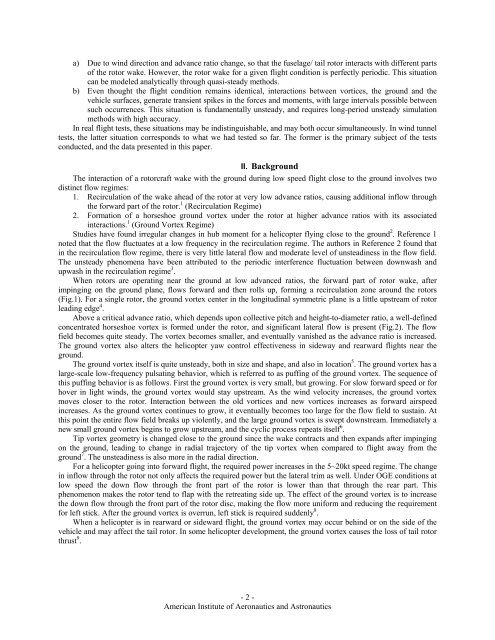
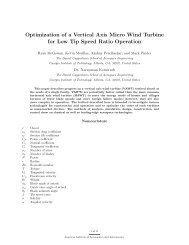
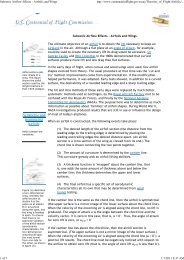

![p density of fluid, kg/m3 [Greek letter rho] V mean velocity of fluid, m ...](https://img.yumpu.com/50595898/1/184x260/p-density-of-fluid-kg-m3-greek-letter-rho-v-mean-velocity-of-fluid-m-.jpg?quality=85)
